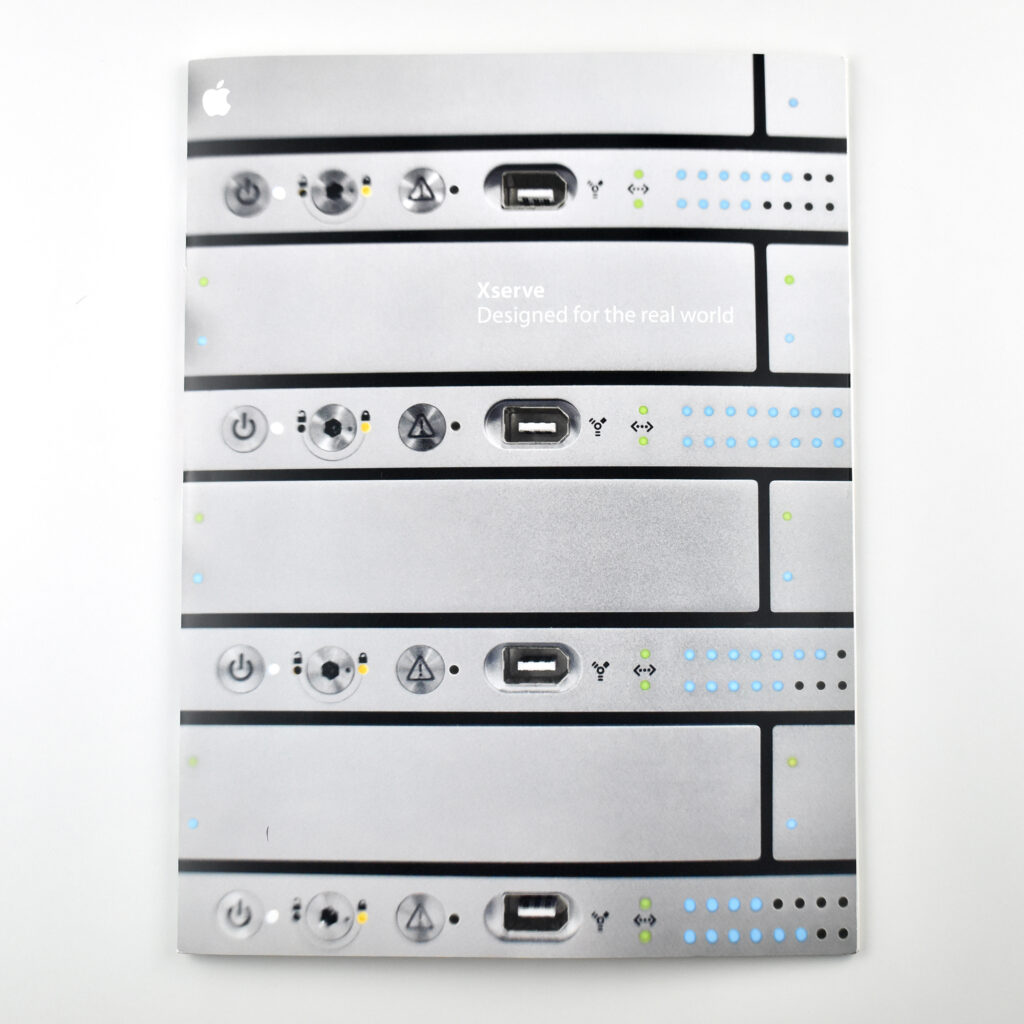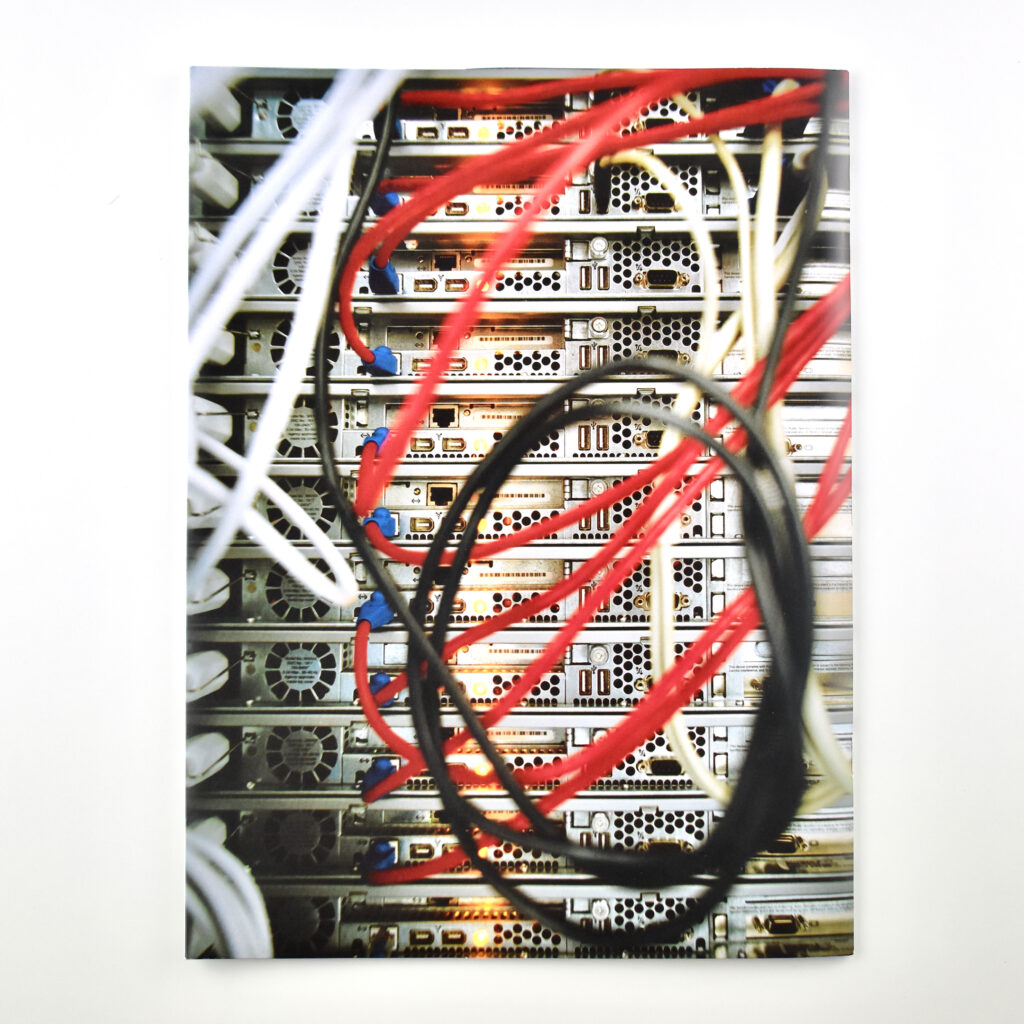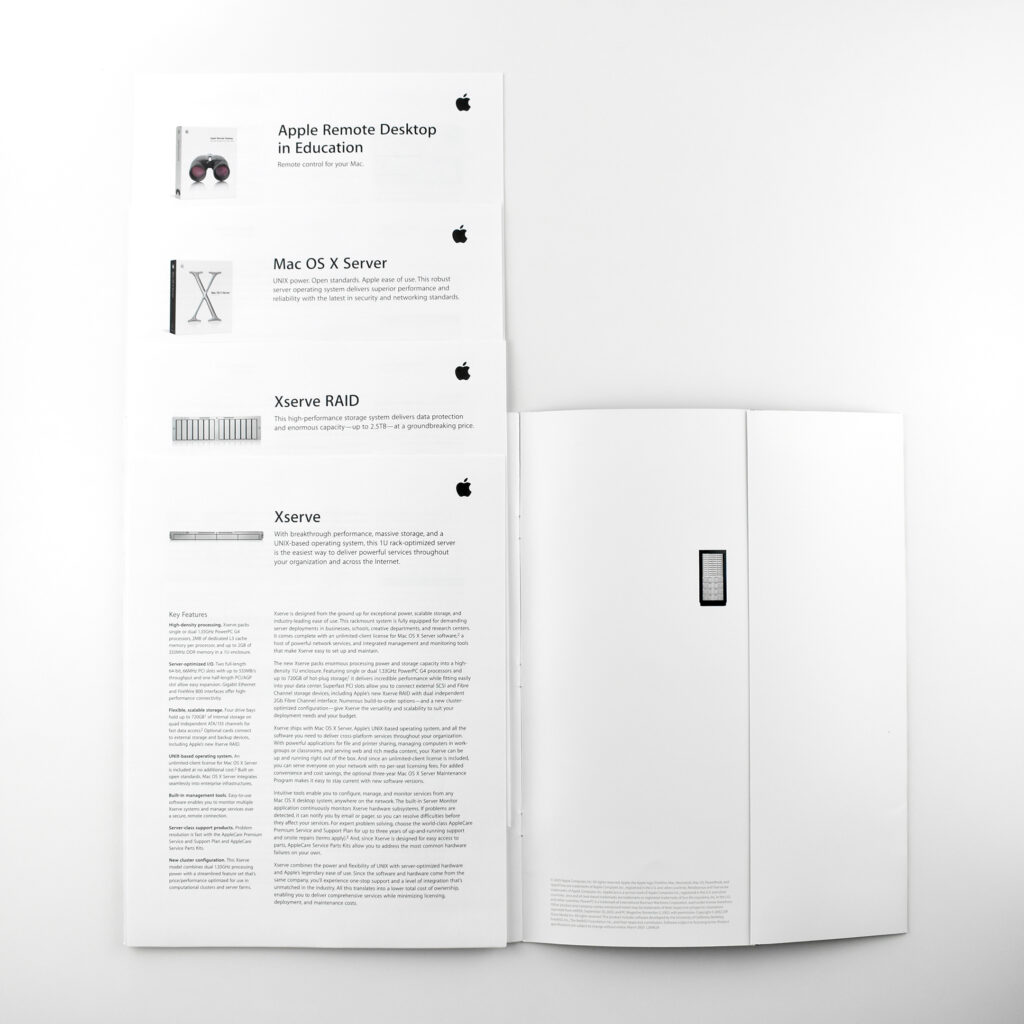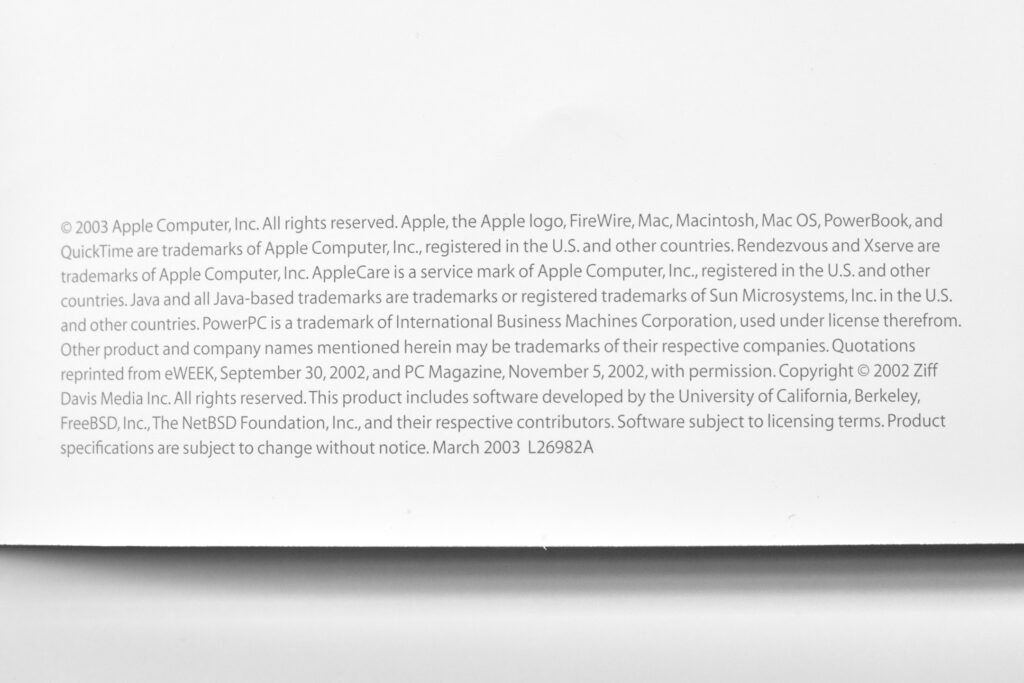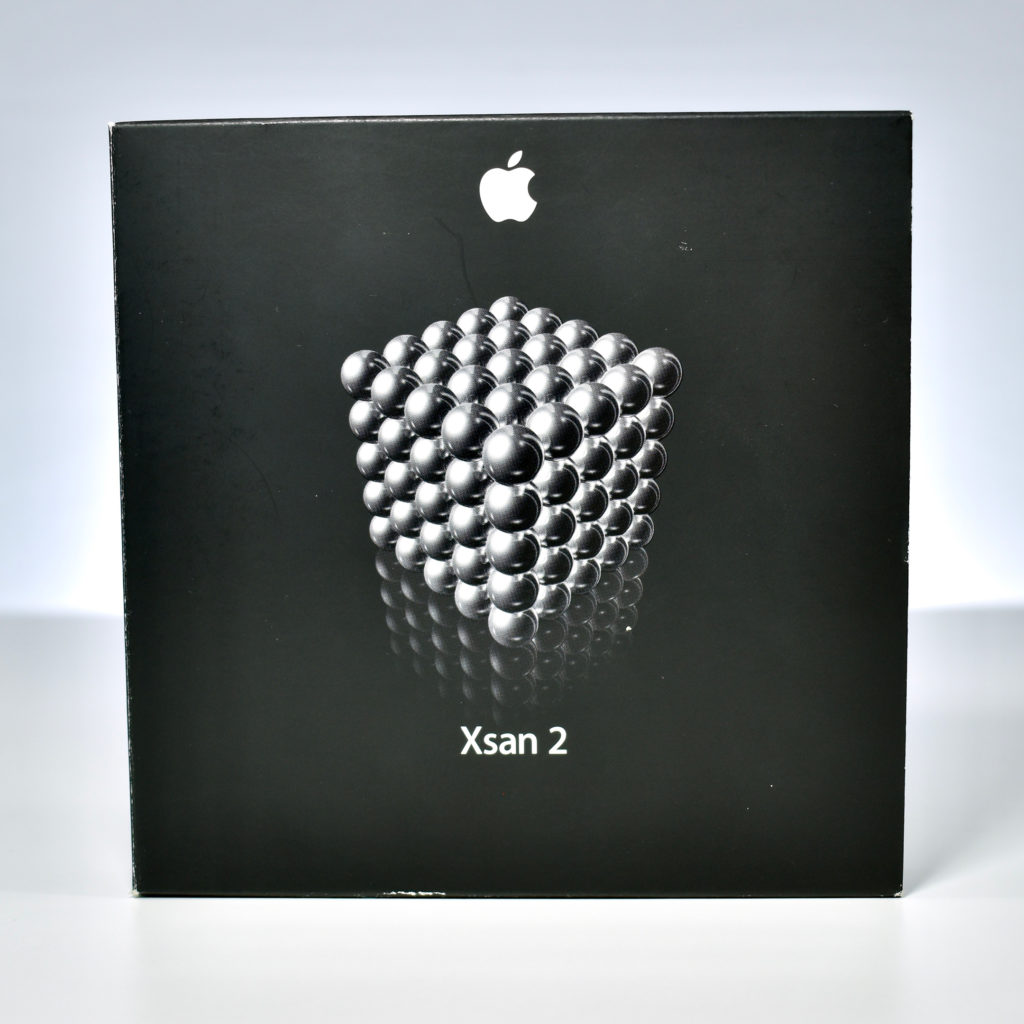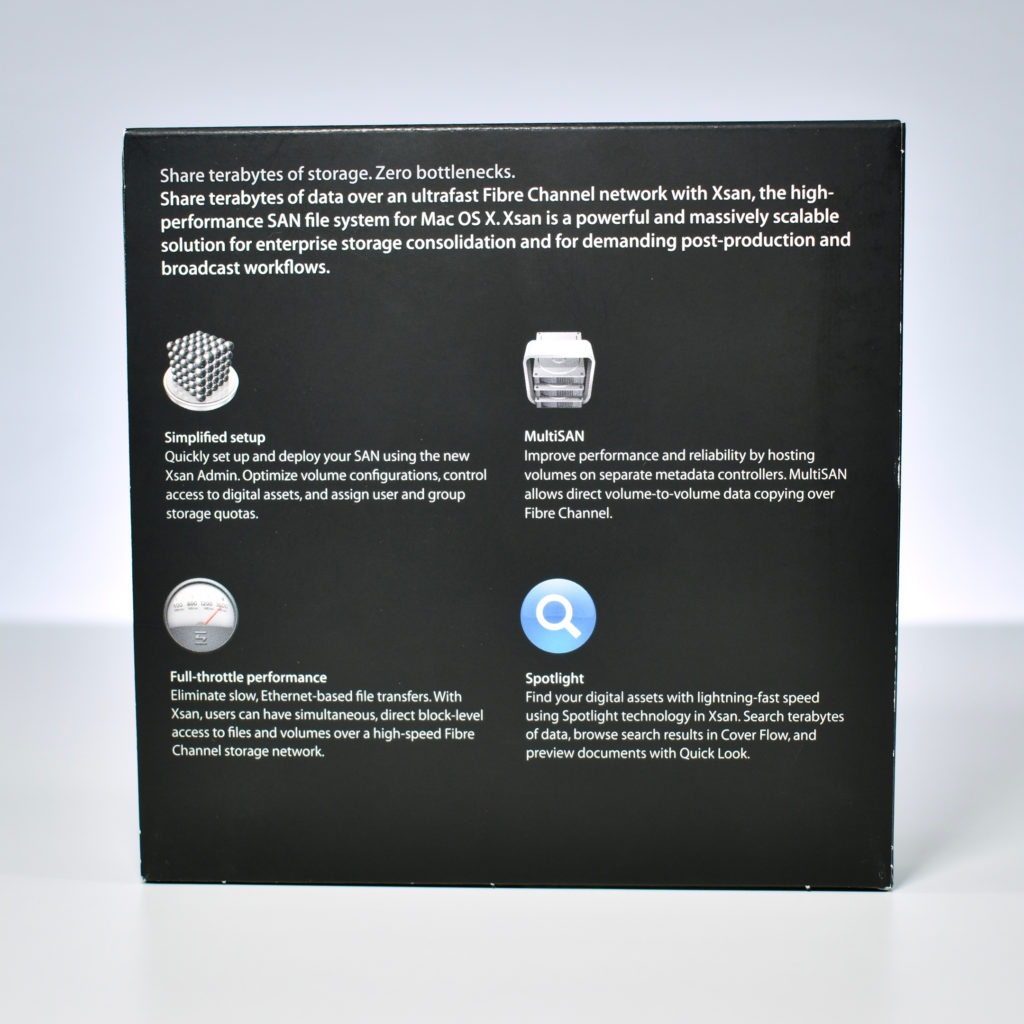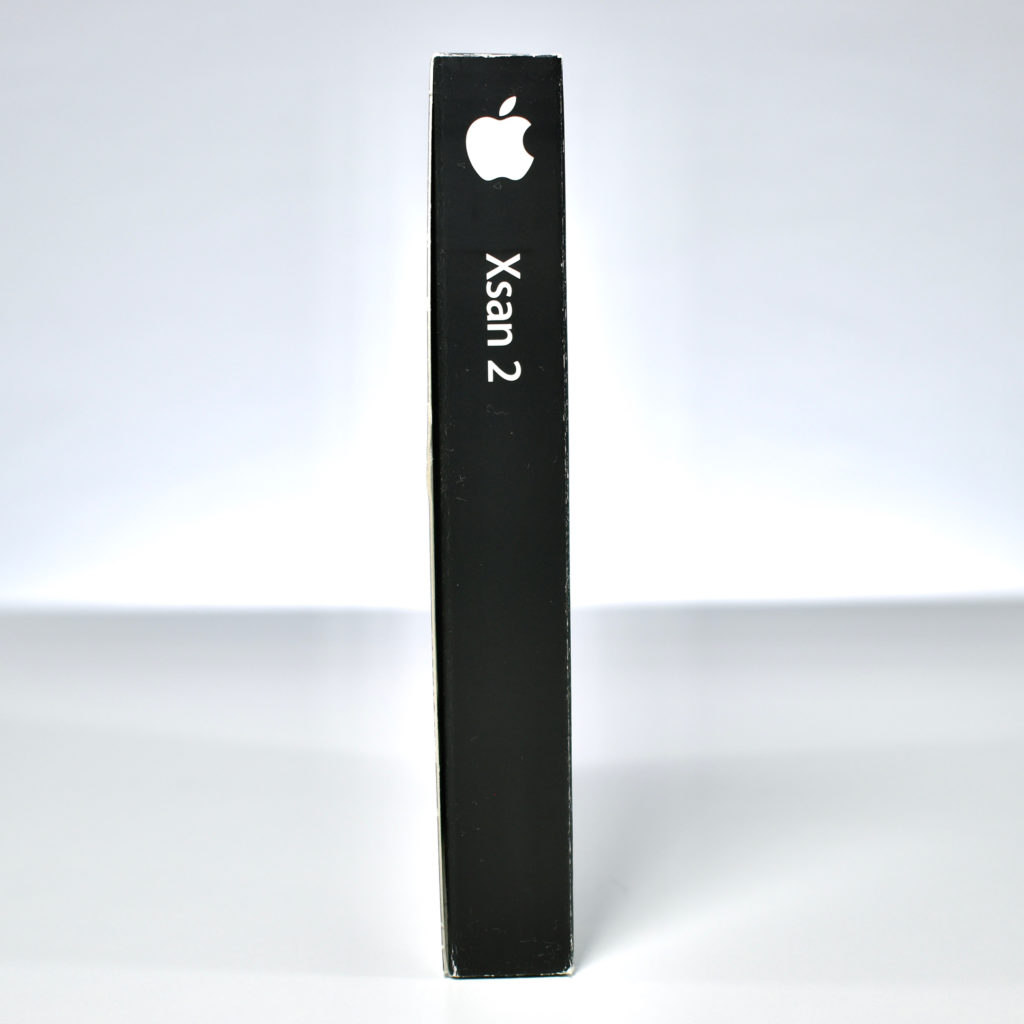This brochure provides information about Apple’s Xserve line of rack-mounted servers, produced between 2002–2011. According to Apple, Xserve was a:
“powerful 1U rack-mount server designed with Apple’s legendary ease-of-use for groundbreakingly simple set up and remote management. Designed from the ground up as the perfect complement to Apple’s UNIX-based Mac OS X Server software, Xserve is ideal for business and education customers. Xserve provides exceptional performance in a compact 1U rack-mount server… Xserve includes an unlimited user license to Mac OS X Server software, offering users a perfect combination for file/print service, video streaming, database applications, computational clustering and web and mail serving.”
Three basic Xserve models were sold: Xserve G4, Xserve G5, and Xserve Xeon.
This brochure is 9 x 12 inches, printed on matte paper, and features a side pocket on the back cover in which current product data sheets could be inserted. The brochure profiles several uses for Xserve including mission-critical applications for fraud prevention, UNIX development, public school network services, and fast file sharing in a creative environment.
My brochure included education-oriented materials in the back pocket, including Apple Remote Desktop, Mac OS X Server, Xserve, and Xserve RAID. In the various school districts where I served, I have used all of those products in the past.

